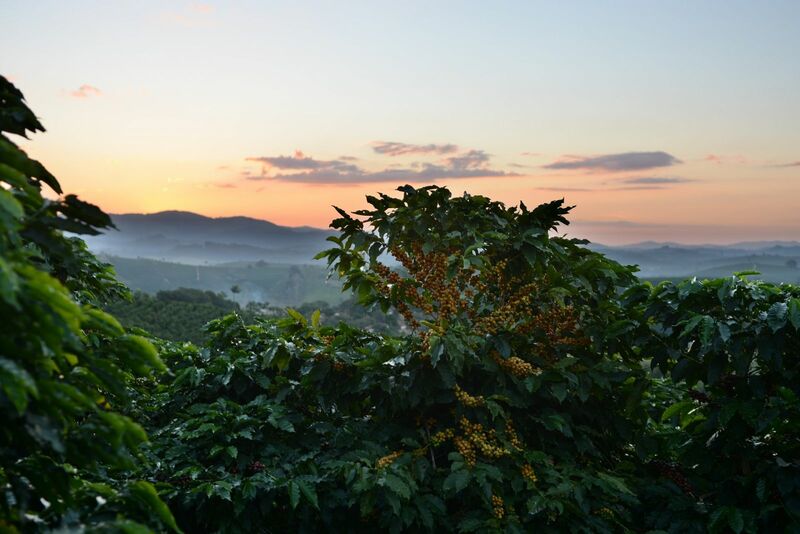
Sep arabica coffee (KCU23) this morning is up +0.40 (+0.27%), and Sep ICE robusta coffee (RMU23) is down -25 (-0.97%).
Coffee prices this morning are mixed. Arabica recovered from a 7-1/4 month low and posted modest gains on strength in the Brazilian real. Short covering emerged in arabica coffee today after the real (^USDBRL) rebounded from a 2-1/2 month low against the dollar and moved higher. The stronger real discourages export selling from Brazil's coffee producers.
Coffee prices remain under pressure as favorable weather in Brazil, the world's largest arabica coffee producer, has accelerated the country's coffee harvest, boosting supplies and undercutting prices. Cooxupe, Brazil's coffee export cooperative, reported Wednesday that Brazil's coffee harvest was 81.9% completed as of August 11, ahead of the 79.8% completed at the same time last year. Dry conditions in Brazil have accelerated the pace of the coffee harvest. Somar Meteorologia reported Monday that Brazil's Minas Gerais region received 1.8 mm of rain last week, or 56% of the historical average. Minas Gerais accounts for about 30% of Brazil's arabica crop.
An increase in Brazil's coffee exports is negative for prices after Cecafe reported last Thursday that Brazil's July green coffee exports rose +22% y/y to 2.7 mln bags, with robusta July exports more than tripling to 505,153 bags.
On the bearish side, Honduras, the largest coffee-producing country in Central America, reported July 31 that its coffee exports rose +63% y/y in July to 828,499 bags.
Smaller global coffee supplies are bullish for prices after the International Coffee Organization (ICO) on August 3 reported global coffee exports from Oct-Jun were down -6.2% y/y at 93.44 mln bags. Also, ICE-monitored robusta coffee inventories on Friday fell to a record low of 3,864 lots (data history back to 2016). In addition, ICE-monitored arabica coffee inventories Tuesday dropped to an 8-3/4 month low of 513,740 bags.
Tight global robusta coffee supplies are bullish for robusta prices. Vietnam's General Department of Customs reported last Wednesday that Vietnam coffee exports in the first seven months of this year (Jan-Jul) fell -3.4% y/y to 1.1 MMT. Also, Vietnam's coffee harvest this year is expected to drop more than -7% to 1.67 MMT, the smallest crop in four years, according to a Bloomberg survey of exporters and traders released on May 3. Vietnam is the world's largest producer of robusta coffee beans. However, Cecafe reported on July 20 that Brazil's June robusta exports rose +60% y/y to 230,653 bags.
A bullish factor for arabica was last Wednesday's report from the Colombian Coffee Growers Federation that Colombian July coffee exports fell -17% y/y to 846,000 bags. Colombia is the world's second-largest producer of arabica coffee beans.
Coffee prices saw support after Rabobank on June 27 raised its 2022/23 coffee deficit forecast to -6.4 million bags due to a 3.6 million bag cut in its 2022/23 coffee production estimate to 164 million bags. The lower production estimate was caused mainly by lower production in Brazil and Colombia. However, Rabobank expects a neutral coffee balance in 2023/24, with a surplus in arabica and a deficit in robusta. Coffee trader Volcafe recently forecasted the global 2023/24 robusta coffee market would see a record deficit of 5.6 mln bags.
The USDA Foreign Agricultural Service forecasted in its June biannual report, released on June 22, that world coffee production in 2023/24 will increase +2.5% y/y to 174.3 million bags, with a +6.9% increase in arabica production to 96.3 million bags, and a -2.4% decline in robusta production to 78.0 million bags. USDA FAS forecasts that 2023/24 Brazilian coffee production will rise by +14.5% to 67.9 million bags, while Vietnam's 2023/24 production will fall -3.5% to 30.2 million bags. USDA FAS forecasts that 2023/24 ending stocks will edge higher by +0.8% to 31.8 million bags from 31.6 bags in 2022-23.
The U.S. Climate Prediction Center on June 8 declared an El Nino weather event, which is likely to be supportive of coffee prices. The U.S. Climate Prediction Center said sea surface temperatures across the equatorial Pacific Ocean had risen 0.5 degrees Celsius above normal, and wind patterns have changed to the point where El Nino criteria have been met. An El Nino pattern typically brings heavy rains to Brazil and drought to India, negatively impacting coffee crop production. The El Nino event may bring drought to Vietnam's coffee areas late this year and in early 2024, according to an official from Vietnam's Institute of Meteorology, Hydrology, and Climate Change.
Illustrating a tight coffee supply picture in 2022/23, the ICO said the global 2022/23 coffee market deficit widened to -7.3 mln bags from a -7.1 mln bag deficit in 2021/22. ICO reported that 2022/23 global coffee production increased +1.7% y/y to 171.27 mln bags, but that 2022/23 global coffee consumption increased +1.7% y/y to a larger 178.53 mln bags.
On the date of publication, Rich Asplund did not have (either directly or indirectly) positions in any of the securities mentioned in this article. All information and data in this article is solely for informational purposes. For more information please view the Barchart Disclosure Policy here.






